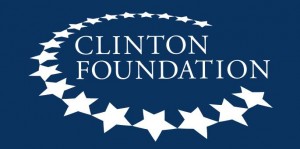Opportunity Rising: Reconnecting Our Youth to the American Economy
 •
•
By Madhuri Kommareddi, Office of Hillary Rodham Clinton
We’re making progress. Across the United States, high school graduation rates are rising, more young people are going to college, and the national unemployment rate has dropped to its lowest point in four years. According to the 2014 Opportunity Index – a report released yesterday that measures economic, educational and civic factors of upward mobility–the potential for opportunity in America has grown 6.3 percent since 2011. That means more and more Americans are able to access the education, training, and jobs that can help them reach the American Dream.
Yet for all this tremendous progress, there is so much more we must do to ensure that every one of us is not only participating in, but benefiting from our economy.
In many areas progress has not only slowed but reversed; today, more Americans are living below the poverty line than in 2011–an 11 percent increase in 4 years. And there are still a staggering 5.6 million youth who are both out-of-school and out of work, and missing out on critical opportunities.
When these young adults are missing from classrooms and workplaces across the country, we all lose. In fact The Corporation for National and Community Service reported in 2012 that the cost of this youth disconnection is more than $93 billion taxpayer dollars annually in lost revenues and increased social services. That’s why we all have to work together to create dynamic solutions that will help engage youth, create opportunity, and build our economy.
Looking at the state and county levels, the Opportunity Index determined that in communities where employers, educational institutions, and local governments formed partnerships to engage opportunity youth (youth who are out-of-school and out-of-work), there were better outcomes in youth employment and overall opportunity throughout those communities. They also found that supporting programs designed to help low-income youth and first-generation college students to find pathways to education and training was essential for growing opportunity.
These partnerships are truly vital, and that’s why at the Clinton Foundation we’ve created Job One, a growing network of businesses, nonprofits, and other partners from across the country that have committed to help young people access new pathways to employment. At the Clinton Global Initiative America meeting in June, Secretary Clinton announced commitments by 10 major American companies, including the Gap, JP Morgan, and Microsoft, and two business-led nonprofits to create new training, hiring or mentoring opportunities to reach more than 150,000 unemployed youth. By September, two more companies and a national labor union signed on to make commitments to expand training, mentoring and build career pathways.
Those companies are now working to engage other businesses through the CGI Action Network on U.S, Youth Employment and their client and industry networks. These commitments are just the beginning, and now it’s time to accelerate that progress and invest in the potential of the 5.6 million youth who can strengthen our economy today and for generations to come.
Read more at the Clinton Foundation.









